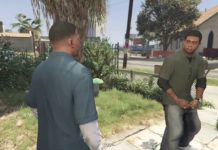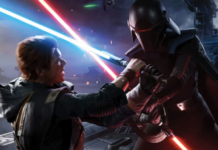January 12, 2004
GMX Media
Shares the Firepower Certification Process
GMX Media and the
FirePower team at
Shockwave Productions
set out to create the most realistic air combat experience possible. They did
this to honor the brave individuals that fought in the air over Europe during
World War II. We continue to lose close to a thousand of these veterans a day.
One of their hopes is that FirePower will be an interactive reminder of these
individual skills, our collective loss, and of lessons that can only be learned
through war, but should never be forgotten.
The Firepower
Certification Process
The flight models for the
Firepower Series Certified Aircraft were developed through an exhaustive process
of research and testing. A great deal of information about each aircraft was
gathered and assessed during the development of its individual flight model.
Multiple historical references were used to confirm the vital statistics of each
plane. The most critical part of the research was the time spent with actual
World War II aircrew. We interviewed and had round table discussions with over
30 World War II pilots and aircrew, many of whom flew the types of aircraft
included in Firepower. These pilots came from the United States Army Air Forces,
United States Navy, and Luftwaffe. We also interviewed current warbird pilots
who fly a wide range of aircraft, from Boeing’s B-17G Flying Fortress to the
P-51D Mustang and Yak-9. Finally, we flew in a number of World War II warplanes,
including the Collings Foundation’s B-17G Flying Fortress and B-24D Liberator,
the Chino Air Museum’s P-51D Mustang, and a T-6 Texan trainer in order to get
real-life experience of just what it’s like to be in these aircraft.
The conversations we had
with these pilots — and our experiences flying with them — were enlightening.
Every pilot we queried confirmed that just going with numbers from a book tells
just part of the story. In the heat of combat, pilots related that they were
able to extract different types of performance from their aircraft than the
textbooks showed. As a result, the flight characteristics of Firepower Series
Certified Aircraft not only take into account authentic flight test reports, but
also reflect the accounts of the men who flew these kinds of aircraft in the
heat of battle.
A partial listing of
references used to create Firepower Certified aircraft follows.
American Warplanes of World War II, by
David Donald.
Jane’s Fighting Aircraft of World War II
The Complete Encyclopedia of World Aircraft,
by Paul Eden and Soph Moeng
America’s Hundred Thousand, by Francis
H. Dean
German Jet Aircraft, by Hans Peter
Deidrich
German Warplanes of World War II, by
Chris Chant
German Aircraft of the Second World War,
by Antony L. Kay and J.R. Smith
Wings of the Luftwaffe, by Captain Eric
Brown
Report of Joint Fighter Conference, by
Francis H. Dean
Major Piston Aero Engines of World War II,
by Victor Bingham
The Complete Book of World War II Combat
Aircraft, by Angelucci, Matricardi, Pinto
Other invaluable assistance
was provided by the following people:
Steve McDevitt, Collings Foundation
B-17G captain, airshow/warbird/airline pilot
Lt. Fred Blechman, U.S. Navy Corsair
pilot and author of "Bent Wings"
Chuck McClure, U.S. Army Air Force B-29
Aircraft Commander
Col. Ernie Bankey, U.S. Army Air Force
P-51D/P-38 pilot/Ace-in-a-Day
Harry Goldman, U.S. Army Air Force B-26
pilot/First Pathfinder Division
Gene Koscinski, U.S. Army Air Force B-24
Bombardier
Bud Lindahl, U.S. Army Air Force B-24
Navigator/Bombardier
Judge Donald H. Foster, U.S. Army Air
Force Instructor and Ferry Pilot
Roy Test, U.S. Army Air Force B-17G
co-pilot (32 missions)
George Muennich, Luftwaffe pilot (He
111, Do 217, Ju 52, Fw 190, He 177)
Lt. Clyde B. East, U.S. Army Air Force
F-6C/D Mustang pilot/Ace (13 victories)
Michael Karatsonyi, Luftwaffe Me 109 G
pilot
Mike Dornheim, Aeronautical Engineer and
aviation journalist
In addition to these
people, we wish to thank everyone who has provided so much invaluable
information during the development of FirePower.







